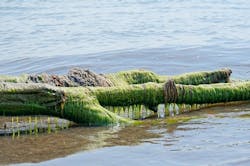Ohio State University Fights Toxic Algae
At Ohio State University, researchers are working to improve tools that could help farmers and others prevent harmful algal blooms.
A team of scientists from Ohio State have shared results from a study that aims to improve models designed to guide agricultural practices for reducing the risk of nitrogen and phosphorous farm runoff. The runoff then leads to growth of toxic algae in waterways.
According to Jay Martin, professor of ecological engineering at Ohio State, models for predicting the consequences of various decisions are available but must be refined in order to ensure reliability and gain the trust of interested parties, including farmers and environmental protection organizations.
Asmita Murumkar, a postdoctoral researcher at Ohio State, said her work is beginning to illuminate how the timing of fertilizer application intersects with heavy rains to contribute to nutrient runoff. Murumkar is working with the Ohio Applicator Forecast, a tool that uses National Weather Service data to assign risk estimates to applying fertilizer at different times. She is hopeful that her research will help quantify what impact the tool would have on the environment under different scenarios.
“We want to better understand how much phosphorus runoff it would reduce in the region,” Martin said to Ohio State.
Martin adds that there is plenty of evidence that individual farm practices impact runoff from those farms, but less evidence in terms of larger-scale estimates.
“We know from our previous work that fertilizer timing is important, but we want to be able to look across the whole Lake Erie Basin and know best-case and worst-case scenarios and this modeling will help address that,” he said to Ohio State.
According to Margaret Kalcic, assistant professor in Ohio State’s Food, Agricultural and Biological Engineering, farmers are encouraged to follow the “Four Rs” for right time, source, amount and place when applying fertilizer.
“But ‘right’ is not clearly defined, and our team is working to provide our partners in Ohio, including farmers, advocates and policymakers, with better answers,” she said to Ohio State.
Addressing water quality challenges is among one of the school’s top research priorities. According to Ohio State, faculty and staff are working with policymakers, farmers, advocacy groups and other to find solutions.
